Memorial Butterfly Garden
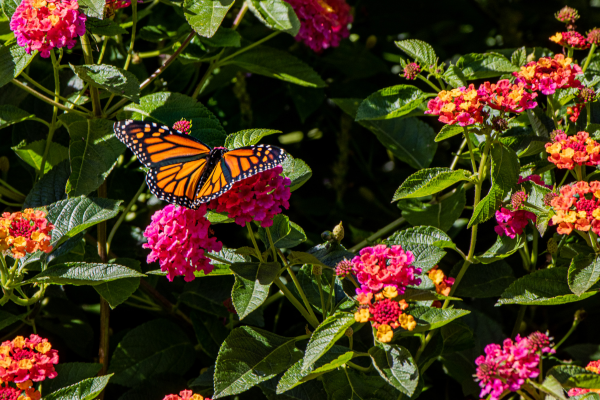
Dedicated to Ashley Deal
The Parker County Master Gardener Association designed and installed the Butterfly Garden in the summer of 2003.
Located on the grounds of Chandor Gardens, this beautiful garden was dedicated as a memorial to a Weatherford city employee’s little girl who lost her life in a tragic accident.
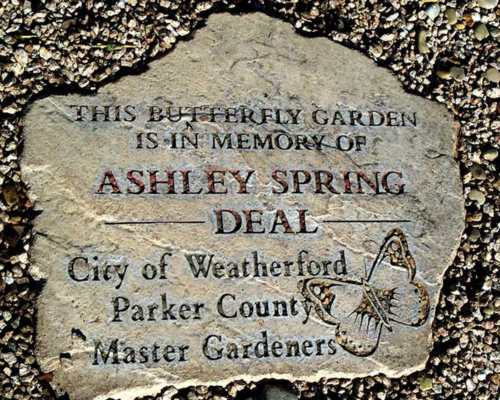
Just like all creatures, butterflies have different requirements during each stage of their life cycle. They must have shelter from inclement weather and places to roost and hide from predators. Larvae need food and when they are ready to enter their pupae stage they seek out safe, tucked-away places. Adults must have nectar plants and places to bask, court, and lay eggs. Water is imperative and “puddling” (damp, muddy) places are very desirable because of the nutrients they contain. Rocks in sunny spots are important for basking (getting those beautiful wings warmed up after cool nights). Logs and trees are highly desired because of the safety they offer during all stages.
All of the plants, rocks, logs, and containers in this garden supply the necessities required for the completion of life cycles of a variety of butterflies. A brief description is offered below.
Left side of path
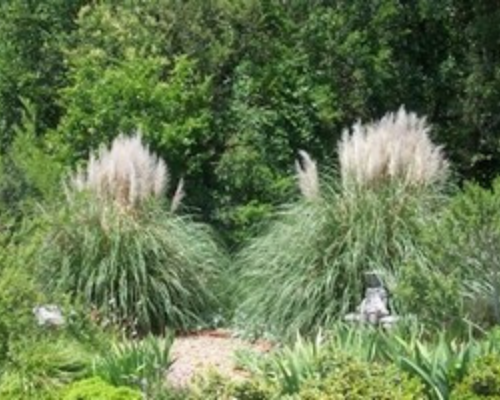
Its neighbors on the right/north are two huge clumps of dramatic pampas grass.
Two clumps of dwarf love grass are between the pampas grasses.
Three clumps of black fountain grass are in front of the love grass. Their large, airy black plumes have been known to cause visitors to fall in love with native grasses.
Three clumps of Moudry fountain grass are in a row along the brick path edging in front of the other grasses.
The Pendula (weeping) yaupon holly in the southwest corner provides food, shelter, and places to lay eggs on the underside of its leaves.
At the base of the yaupon, flat clusters of blue flowers above the carpet-type foliage of perennial verbena make ideal landing pads for butterflies seeking nectar.
In early spring, brilliant, deep-yellow blooms seem to explode along the branches of forsythia shrubs on each side of the weeping yaupon. Snowy white clusters of tiny blooms are scattered along the arching branches of a bridal wreath spiraea shrub that is near the weeping yaupon.
Sedum outlines the bed.
Its neighbors on the right/north are two huge clumps of dramatic pampas grass.
Two clumps of dwarf love grass are between the pampas grasses.
Right side of path
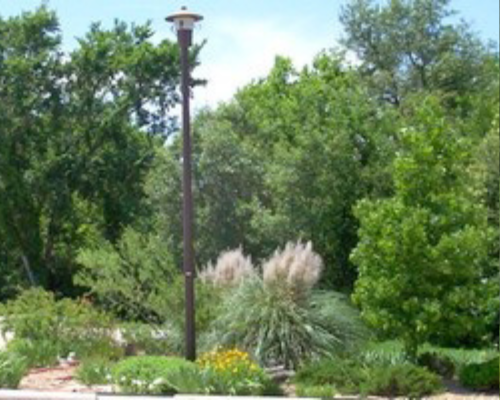
In front of the utility pole, perennial coreopsis provides abundant bouquets of yellow, daisy-type blooms sporadically from spring through fall.
Behind the coreopsis are masses of hardy fall asters. Sky-blue flowers with yellow centers cover them like a lovely quilt in early fall when they offer their nectar to butterflies.
The low, fuzzy silver foliage of lamb’s ear lines the inside edge of the path to the little concrete bench.
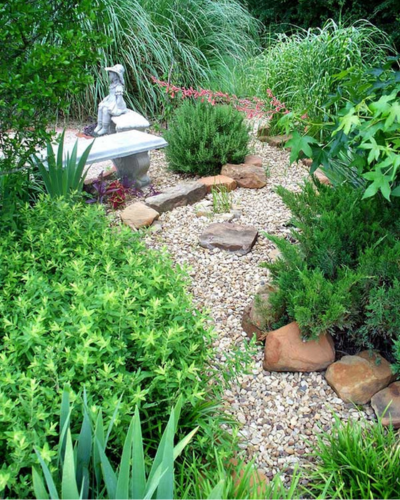
A Pride of Houston yaupon holly shrub is behind the utility pole. The feathery foliage of bronze fennel, next to the yaupon holly, is a favorite of swallowtails in their caterpillar stage. Although they usually strip the plant of foliage, it will put out new growth again.
Swallowtail caterpillars also love to eat the curled parsley and plain Italian parsley that grows on each side of the statue of the little girl on the bench.
The young sweetgum tree, in front of five juniper shrubs on the right/north side of the utility pole, has five-lobed leaves that turn brilliant yellow or crimson in the fall. Its fruit is a spiny ball.
At the far right/north end of the bed, clumps of spring-blooming white oxeye daisies share the spotlight with the attention-getting broken pot that spills out an avalanche of seasonal annual color throughout the year.
